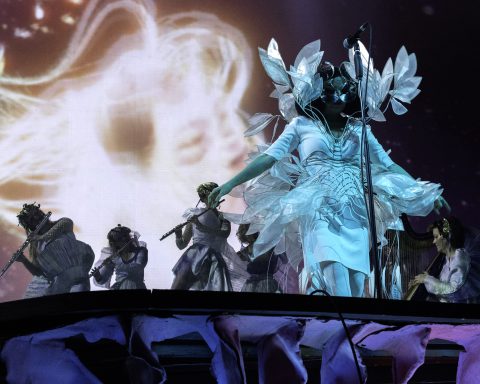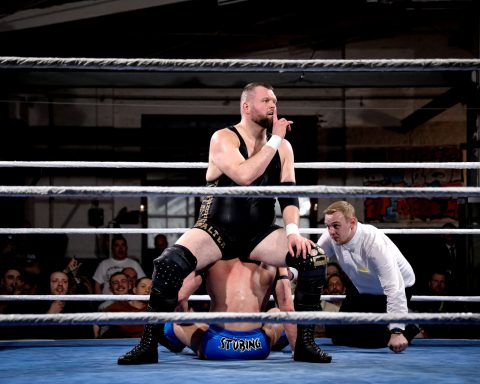While we herald in the Fourth Industrial Revolution (4IR) and have to cope with the challenges of a digitalized daily life, there is a tacitly silent disruption going on in the German corporate world and the factory-turned-start-up scene. German men’s ties are clandestinely disappearing without making a big fuss – however in a brutally violent manner for my taste.

For decades, men in pinstriped suits had predominantly defined the success of “Made in Germany.“ They moved around with artless noblesse and bloated self-understanding on the trading floors of Vanity Fair. But now the time has come to bid farewell to this noble piece of male self-esteem.
The tie has been declared the bogeyman of a modern, liberal elitist post-capitalist generation.
In our gender-bending world, where conventional sexual stereotyping seems to be dissolving – at least in theory – it looks like the former status symbol of the male pecking order has become pretty uncool. As the strongholds of bourgeois establishment seem to have become relics of the past, even CEOs of blue chip companies prescribe, by decree, not to wear ties anymore.
A new breed of Gen Y in advertising and marketing enjoys creating campaigns with generalized equalization across societal milieus and classes – which in theory don’t exist anymore – as we all are equal just like the girl/guy next door. This modern, contemporary species wants to be friends with the entire world. They are tolerant and respect each other, while we all chill with no visible classification of social hierarchy. There is a plethora of ads for products and services where we are being served a perfect picture, with perfectly happy women and men from all walks of life.
My personal sartorial starting point was on my first day of work in the 90s, in the automotive industry: 1x blue shirt with contrasting white classic collar, and 3x button-down with single cuff, and obviously matching cufflinks, in a room.
Occasionally, there were variations of shirt accessories like tie bars, bowties and pocket squares. The modern German man loved to adorn his status with a variety of these accessories and thus present himself in a glamorous manner. The symbolic manly staginess left no limits for hedonistic refinement in terms of customizing your ego: Extra levels of distinctiveness were to be found on monogramming on various cuff types and/or pockets, in order to be recognized as tailor-made sartorial individuality.

It didn’t take me too long to realize that the collar size and shape had to go hand in hand with your hierarchy level in the company.
It would have been utterly inconceivable to attend an internal and/or external business meeting without a tie and appropriate suiting. The sophisticatedly trained eye would spot the brand (Hermès, Bulgari, Zegna, etc.) of tie right away, and class distinction was celebrated like a beauty pageant of the most magnificent chanticleer.
The average clerk up to middle management contended himself in the price range of 20 – 60 euros with brands like Eterna, Boss, Seidensticker and the emerging tie bar brands.
This was also the hype when tie bars were mushrooming at airports and the metropoles of the world, which coincided with the great era of international mergers and acquisitions, joint ventures of entire complex industries around the globe. As a worldly frequent flyer, there were no limits to showcasing your knowledge of English and American sartorial language (Casual Friday, black tie, white tie, Chinos, etc.), and importing it with stylistic confidence into the German Vorstandsetage – board level and below for aspiring candidates.
So what could the legitimate heir to the tie now be?
Are we going to be run over by hoodie wearing, young hip entrepreneurs in stylish sneakers that celebrate their facial hair, unlike the frowned upon managers of the 80s/90s/00s?
Is this decreed, status-free dress code really the liberation of men that have suffered from the moral burdens imposed by a dusty, outdated management style?
Personally, I see this new “cool laxity,” which can be seen every day on TV as well, as another form of a superimposed social media mold, and of the uniform leveling of the individual. If you don’t wear distressed jeans with sneakers designed by singers or celebrities, you are somewhat out and not contemporary.
Wearing blue jeans has become the uniform for women and men equally. Isn’t this basically a dictate of a new social norm? Are we all to be “mainstream,” without being able to display our own individual, authentic personality?
Even though we all might have this uniform external appearance, don’t we actually teach our children not to judge a book by its cover? “Being equal” does not discharge you from making decisions and being your own boss, even if not everybody wants to seize responsibility and exercise leadership qualities.
However, even with demographic shifts and changing work environments, we still need to make decisions to run businesses – even in transparent, fluid and disruptive management styles. And I couldn’t say it better than my favorite writer George Orwell in Animal Farm.
“All animals are equal, but some animals are more equal than others.”
I really applaud US and English media professionals for still adhering to a certain classic dress code when presenting to the public. In this way, they pay respect to their audience without focusing on their own hedonistic self-expression.
By Uemit Appenzeller
Writer. Thinker. Observer. Keeper and Sharer of Knowledge and Wisdom. Loves Fashion and Football. Mother of Millenials.
This article was first published on Linkedin in German on 6 September 2017.
Cover shot: How much more individual can you get than choosing the fabric and cut of your made-to-measure suit? Vest, tie and shirt from De Scale. (Photo: maeshelle west-davies)







